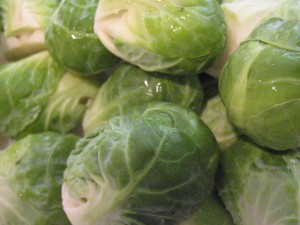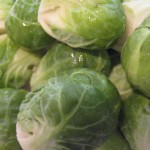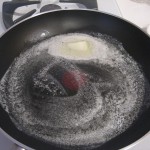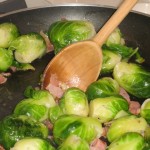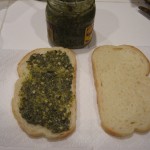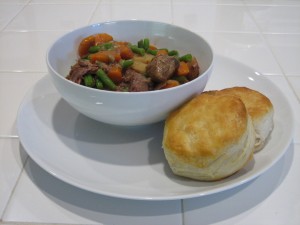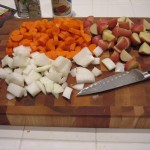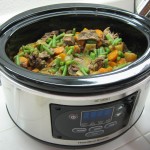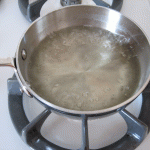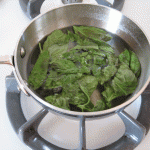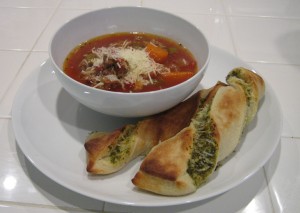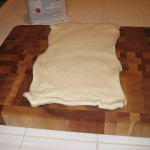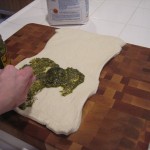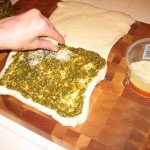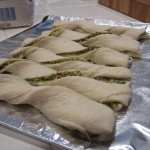School has kept me quite busy lately, so obviously I haven’t had much time to post anything. Steve has also been extremely busy doing taxes, so we haven’t been doing much cooking or eating of interesting things. But, I was thinking I had some pictures of an interesting soup I made a while back that I should write about.
I got a cookbook from Steve’s parents for Christmas called “Love Soup.” It’s full of vegetarian soup recipes, organized more or less by time of year, so there is a section with hearty filling soups for cook weather and lighter refreshing soups for warmer weather. My first attempt at one of these recipes was Black Bean and Kabocha Squash Soup.
I started with a classic mirepoix — onions, carrots, and celery. Onions went in first, with a couple of bay leaves. Then the carrots and celery. The recipe also called for 1 or 2 jalapeño peppers. These were not available at the grocery store, so I picked up a couple of Anaheim peppers instead, and chose to use 2 because they have a little less heat than jalapeños.
While I sauteed the onions, carrots, celery, and peppers, I had a kabocha squash — cut in half and seeded — roasting in the oven. It was nice and tender after about 45 minutes. At that point, I let it cool until I could handle it and scoop out the insides.
Back to the stove. Once the onions, carrots, and celery were a bit softened, I removed the bay leaves and put the mixture in a big pot with two cans of vegetable broth. Ok, so I used chicken broth because I already had it in the cupboard. I’m not a vegetarian, so it doesn’t concern me. Do what you want. Once I brought that to a simmer, I added two cans of black beans, drained and rinsed. And finally, the cooked squash.
Once that is simmered for a bit, the mixture gets blended into a smooth soup. I blended it in batches in our counter top blender, since we don’t have an immersion blender. Honestly, I do not recommend this method. Messy would be an understatement. I’m not doing it again until I get an immersion blender.
And that’s it! We ate it with corn bread. The soup does not look real appetizing to me. I had a hard time taking the first bite. But it sure was tasty! Surprisingly rich, though. A small bowl is really all I could handle. I feel the same way about split pea soup. I can only take so much of it.
© 2010 The Beehive All Rights Reserved

